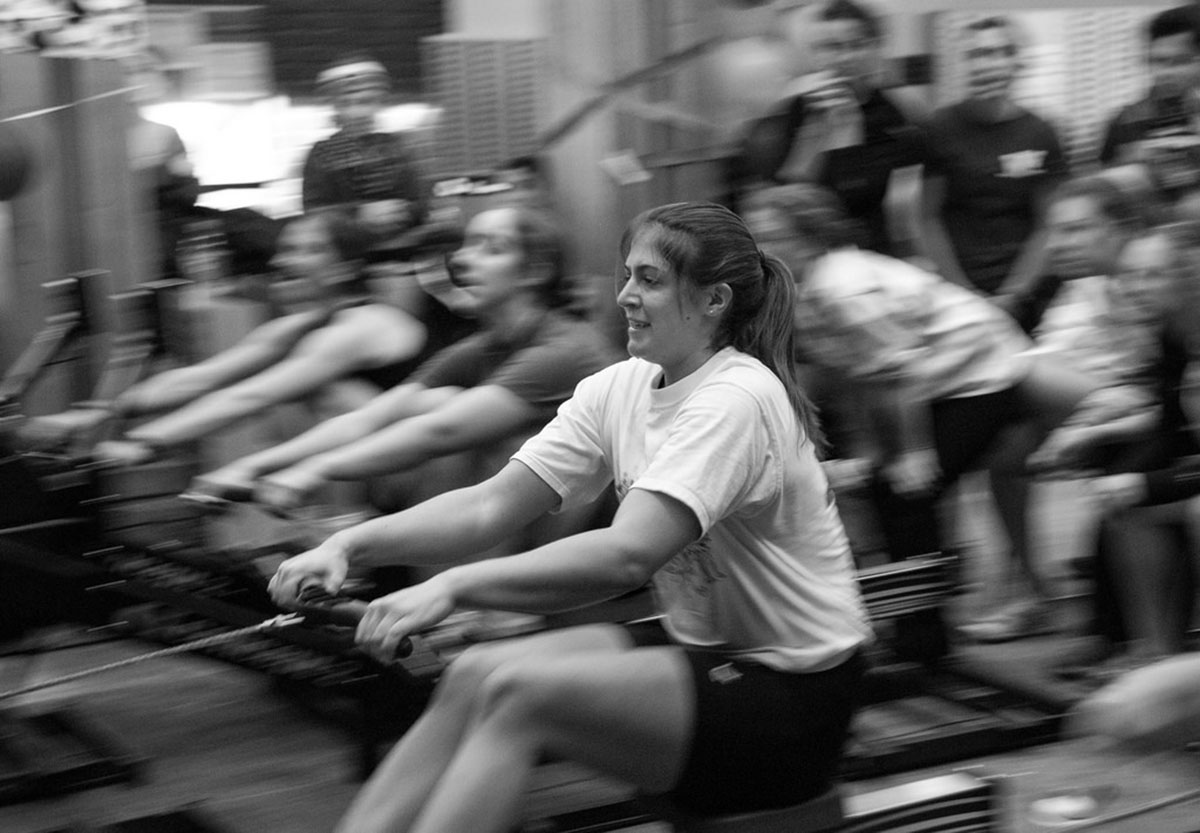Tabata workouts are popular because of their proven ability to deliver life-changing effects. But many of the workouts labelled "Tabata" don't have a lot to do with the work of Professor Tabata.

Circuit workouts are hugely popular because they allow an intense training session, and people equate intensity with achievement — it was hard, so it must be good. Professor Tabata's research backs up a dismissal of traditional conditioning and endurance-cardio sessions, replacing them with HIIT, or High Intensity Interval Training.
The trouble is, just because something's HIIT doesn't mean it's Tabata. And just because it's called HIIT does't really mean it is.
What Do We Mean By Tabata?
The Tabata protocol is actually a very specific training modality, created with very specific goals in mind. Professor Tabata used a regime consisting of four sessions of what we now call Tabata circuits, and one session of steady state cardio. Yes, Tabata includes steady state cardio. Maybe your interval training regime doesn't — and maybe it does. Because maybe your intensity isn't all it could be. The original study used very specific, physiological markers to determine intensity and goal setting. The steady state cardio was done at 70 percent VO2 max, while the sprints were done at 170 percent VO2 max.
Huh?
VO2 max is peak oxygen uptake. The purpose of Tabata isn't negative rest, or getting you smoked. It's to force you to train on the other side of the aerobic threshold, using your anaerobic energy system. Seventy percent VO2 max is still quite challenging, and 170 percent VO2 max is more intense than most people are prepared to know about.
That's why the original Tabata sessions consisted of an 8-minute warm-up and a 2-minute cool-down, and only 4 minutes of sprints. If athletes couldn't complete the sprint cycle with sufficient intensity they were stopped at 7 sprints.
These were serious athletes with bags of motivation and staff of scientists around them. For them, improved performance meant victory in their sport and could impact their careers. And they sometimes couldn't do a full four minutes.
What Do We Mean By HIIT?
HIIT means high intensity interval training. It's currently the received wisdom in the health and fitness field. But there are problems associated with it. It can be counterproductive when it's regarded as being too elastic — when people start doing HIIT with kettlebells, dumbbells and complicated calisthenics, moving from one station to another, they're moving away from a focus on conditioning and into a general workout — one that could be better designed if it wasn't in thrall to "intensity". Some of these workouts are an hour long. How can they possibly be "high intensity"?
See Also: Go Hard Or Go Home Needs To Go Home
They're just circuit training. That's fine, except that the major defining factor of these workouts is their intensity. Trainers encourage the feeling that being constantly exhausted means you're having a great session. Maybe; maybe not. You're certainly not doing Tabata.
The Tabata Protocol: Back To The Source
The original Tabata protocol used braked ergometer cycles for a reason. Sprints on braked ergometer cycles involve no real danger of falling over, tripping up, pulling something... athletes didn't have to keep their balance, hold any external weight, move through different planes of potion or do anything but sprint. Because really, that level of intensity is totally unattainable when you're trying to do complex movements.

The more intense your training, the more your form will suffer. If you're doing something that requires great skill and dexterity, like shooting a bow accurately, putting a barbell overhead in one of the Olympic lifts or performing sporting movements, your fitness base supports your ability to do the movements - but the movements will go way before your fitness base goes. Your coordination will degrade before measurable raw strength, endurance and cardio are even affected.
So if you're shooting for intensity, shouldn't you use the very, very simplest movement?
Tabata was never designed to be a catch-all. Tabata training was designed to have certain effects on oxygen uptake. The original study says nothing about post-exercise oxygen uptake, fat loss, or even hormonal effects like HGH and testosterone secretion. These factors almost certainly accompany Tabata training — in fact, Professor Tabata is working on a paper on the subject — but they also accompany any anaerobic training.
Tabata isn't fat loss, strength gain, hypertrophy, skill, explosiveness, balance training — it's a smarter way to do cardio. Don't try to do it on one leg on a medicine ball. It just doesn't make sense.
That's not to say circuits aren't effective. Barbell complexes, pre-fatiguing, drop sets and more are tried-and-tested ways to get stronger and more muscular using circuit-like training methods. Many runners do circuit training without even realizing it, alternating periods of fast and slower running during the course of a longer run. So do many cyclists. Bodyweight circuits are effective, weights circuits are effective, any circuit training is a good way to pack decent training session into less time - but what they're not is Tabata.
If you want to integrate actual Tabata protocol training sessions into your workout plan, try building six weeks of them at a time in. If you happen not to have access to a lab and can't measure your VO2 at the gym, you can figure it out. All you need is a 400m track or treadmill with a distance meter, a stopwatch and this formula. Jog lightly for a few minters, then walk one mile as quickly as possible, timing yourself. At the end of the walk, take your heart rate by timing fifteen seconds and monitoring your pulse, then multiplying the beats in fifteen seconds by four to give beats per minute. The formula for figuring out your VO2 max from your heart rate is this:
132.853 - (0.0769 × Weight) - (0.3877 × Age) + (6.315 × Gender) - (3.2649 × Time) - (0.1565 × Heart rate). Your weight should be in in pounds (there are 2.2 pounds in a kilogram and 14 in a stone), age in years, time in minutes to the hundredth second and your heart rate in beats per minute. For gender, men should input a one and women input a zero.
See Also: Why Pro Athletes' Workouts Won't Work Out For You
If all that maths puts you off, you either go by perceived intensity or simply use your heart rate to figure out your anaerobic zone. Either way will work fine - the important thing is this: If you can do it for four rounds of four minutes, it's not Tabata and it's not going to deliver the same benefits. Your sprints should be all-out, not pacing yourself.
If you like what I've said, or you want to know more — or you have a bone to pick! — get in touch with me in the comments section below.
- Photo courtesy of Boemski via Flickr: www.flickr.com/photos/ggvic/3255129747
- Photo courtesy of BenBradshaw via Flickr: www.flickr.com/photos/bensphotots/12530855544


Your thoughts on this